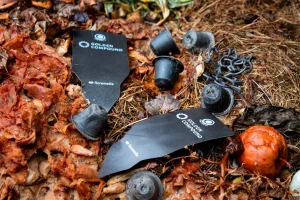Bio-PBS: an innovative and sustainable plastic made from corn starch
There’s a growing demand, especially for sustainable alternatives to conventional plastics. Bio-PBS, a bio-based and biodegradable plastic, could be a great solution for lots of different applications.
Bio-PBS stands for polybutylene succinate and is made from two bio-based raw materials: succinic acid and 1,4-butanediol. You can get succinic acid from fermented sugar or starch, while 1,4-butanediol is produced from corn starch.
What are the benefits?
There are a few reasons why Bio-PBS is a better option than conventional plastics made from fossil fuels:
- Sustainability: Bio-PBS is made from renewable raw materials and is biodegradable, which means it has a smaller environmental impact than plastic waste.
- Good barrier properties: Bio-PBS is great for keeping oxygen and water vapour out, so it's ideal for packaging food and other sensitive products.
- It's strong and stiff: Bio-PBS is just as strong and stiff as conventional plastics, so it's ideal for technical applications.
- Processability: One of the great things about Bio-PBS is that it can be processed just like conventional plastics. This means that it can be used in injection moulding, extrusion and thermoforming.
- It's food-safe: Bio-PBS is approved for contact with food in many cases.
- Recyclable: Bio-PBS is fully recyclable in its own cycle.
Where can Bio-PBS be used?
Bio-PBS is suitable for a wide range of applications:
- Packaging: Bio-PBS is great for packaging food, beverages, cosmetics and other products.
- Films: Bio-PBS films are great for bags, sacks and other applications.
- Technical parts: Bio-PBS is great for technical parts in the automotive, electronics and other industries.
- Technical parts: Bio-PBS is great for technical parts in the automotive, electronics and other industries.
- Basically all applications that were previously produced with PP.
Unsere Mission: Ressourcenschonung
At GC green, we use sunflower seed husk fibres, which are a waste material from the food industry, and bio-PBS. By using corn starch as a raw material for organic PBS, we contribute to a sustainable circular economy by using the corn plant holistically: starch for bio-PBS production and protein for animal feed.
Plus, Bio-PBS can be recycled with our sunflower seed husks. It's a simple process: we grind the products again and re-compound them. This works even though GC green compounds are biodegradable. This is because degradation basically happens under natural conditions in a compost heap. As long as the products are kept away from this, they can be stored in the cupboard without a problem and give you many years of pleasure.
We're always working on new ways to improve our Bio-PBS products and find new uses for them. Our goal is to make Bio-PBS a key part of a sustainable future.



